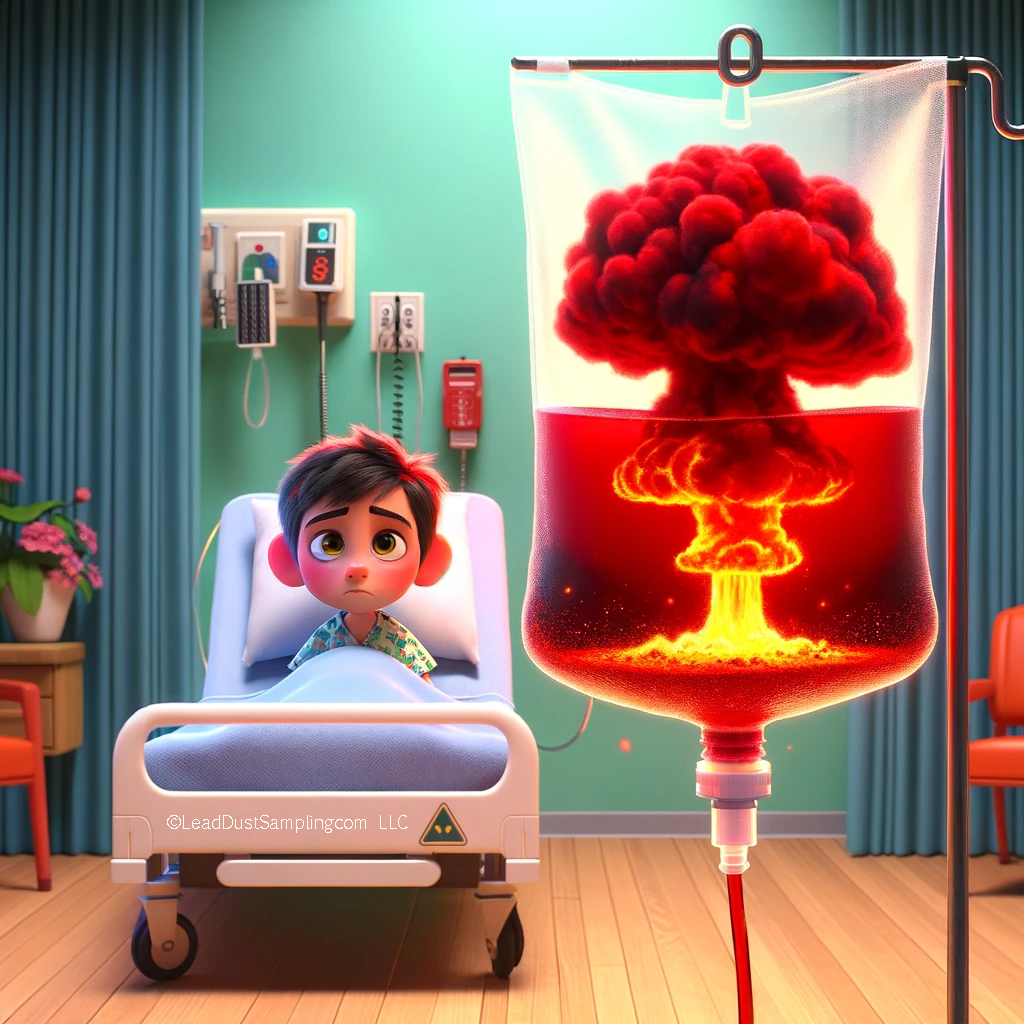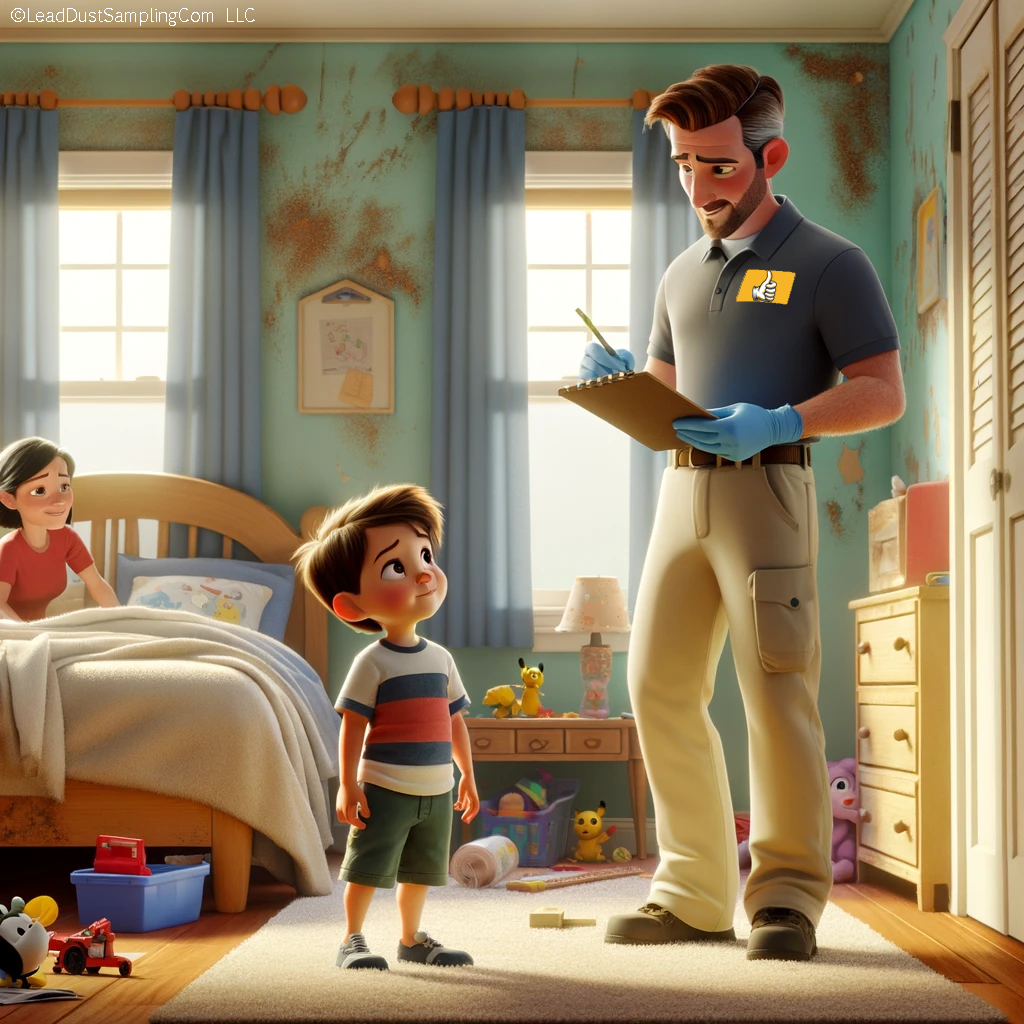Unmasking the Hidden Villain: Lead in Our Homes
Unmasking the Silent Villain.
For centuries, lead has been a silent villain lurking in the shadows of our homes, camouflaged by its commonplace uses. Historically celebrated for its versatility, lead was widely used in everything from ancient plumbing systems to the paint that brightened our walls. However, this seemingly benign element harbors a dark side, one that has gradually been exposed over time, revealing its toxic effects on human health.
The Evolution of Lead Exposure
In the past, lead's prevalence in everyday materials was a testament to its utility. It was found in the pipes that carried our water, the paint that decorated our homes, and even the gasoline that fueled our vehicles. As we advanced, so did our understanding of lead's insidious impact, particularly on children. Yet, despite significant strides to reduce lead exposure, the villain still lingers in many homes today, posing risks that are often unseen but no less dangerous.
Lead in Paint: Once a symbol of vibrant colors, lead-based paint is a primary source of lead poisoning in older homes. As it deteriorates, it releases toxic dust, turning the sanctity of your home into a potential hazard.
Lead in Drinking Water: The very pipes that deliver water to our homes can also be conduits for lead, especially in systems that haven't been updated or treated to prevent lead leaching.
The Silent Villain Unveiled
Lead is a formidable opponent because it attacks silently, often going unnoticed until harm has been done. It's a contaminant that respects no boundaries, affecting homes rich and poor, new and old. The key to combating this silent villain lies in awareness, testing, and remediation. Understanding where lead hides and taking proactive measures to reduce exposure can protect your family from its grasp.
Your Home, Your Haven
Your home should be your sanctuary, not a battleground. By educating ourselves on the risks of lead exposure and taking steps to mitigate these dangers, we can reclaim our homes from this silent villain. Regular inspections for lead in paint, soil, and water, coupled with proper remediation techniques, can turn the tide in this ongoing battle, ensuring our homes remain safe havens for generations to come.
Unveiling the Impact: Understanding Lead Poisoning
Lead poisoning, the silent villain once hidden within the walls and water of our homes, reveals its true danger when it invades our bodies. Invisible and insidious, lead enters our system, a trespasser that wreaks havoc unnoticed. Its impact is most devastating on the youngest among us—children—who face lifelong consequences from exposure that dims the bright potential of their future.
The Toll on Health: A Closer Look at Lead's Legacy
The dangers of lead are both immediate and long-lasting. In children, even low levels of lead exposure can impair brain development, resulting in learning difficulties, decreased IQ, and behavioral issues. Adults aren't spared, with exposure leading to hypertension, renal dysfunction, and reproductive problems. The villainy of lead is its ability to disguise its symptoms, often mimicking less sinister conditions, which makes it a pervasive threat to public health.
Treatment and Recovery: Reclaiming Health from Lead's Grasp
While the effects of lead poisoning are daunting, hope is not lost. The key to combatting this invisible enemy lies in early detection and intervention. Blood tests can reveal the presence of lead, serving as a crucial first step in the battle for health.
Medical Intervention: For those affected, treatment depends on the level of lead in the blood. Chelation therapy, a medical treatment to remove heavy metals from the body, is used in severe cases. It's a beacon of hope, offering a way to reduce the burden of lead and mitigate its effects.
Nutritional Support: Diet plays a supportive role in the fight against lead poisoning. Foods rich in calcium, iron, and vitamin C can help limit lead absorption in the body, acting as allies in the quest for recovery.
Environmental Remediation: Treating lead poisoning also requires addressing its source. Removing lead from the living environment—whether it be replacing lead pipes, sealing or removing lead paint, or ensuring clean, safe drinking water—is essential to prevent further exposure.
Raising the Shield: Education and Prevention
The battle against lead poisoning is fought on two fronts: healing those affected and preventing future cases. Education is our shield, empowering us with the knowledge to identify risks, take preventative measures, and seek treatment when needed. Awareness campaigns and community health initiatives are vital, spreading the word about the dangers of lead and the importance of regular testing.
A Call to Arms: Protecting Our Future
The fight against lead poisoning is a collective effort that requires vigilance, commitment, and action. By understanding the health impacts of lead exposure and embracing effective treatment and prevention strategies, we can shield our communities from this hidden danger. Your health, your family's well-being, and the future of our children are worth fighting for. Together, we can turn the tide against lead poisoning and ensure a brighter, healthier future for all.
A Step Forward: Testing for a Safer Tomorrow
Discovering lead in your home can be alarming, but it marks the beginning of a journey towards safety and health. Lead testing is the crucial first step in this journey, offering a clear path away from the risks and towards a lead-free future. Whether through paint analysis, water testing, or soil assessments, identifying the presence of lead paves the way for effective action.
The Road to Remediation: Clearing the Path of Lead
When a property fails its lead test, it's not the end of the road but a call to action. Remediation—the process of eliminating lead hazards—is our strategy for reclaiming our homes and our health. Here's how we can fight back:
Lead Paint Stabilization: For homes with lead-based paint, professional remediation can involve either the safe removal of leaded surfaces or their stabilization through encapsulation or enclosure, preventing lead dust from spreading.
Water System Corrections: Replacing lead pipes and fixtures, or installing advanced filtration systems, ensures that your tap water is safe to drink, free from lead contamination.
Certified Professionals: Allies in the Fight Against Lead
Remediation is a task for the experts—trained and certified professionals equipped with the tools and knowledge to make your home safe again. Choosing the right team means selecting those who follow the strictest safety protocols, ensuring that the work done not only meets but exceeds regulatory standards.
Investing in Safety: The Cost and Value of Remediation
The cost of lead remediation can vary, but the value of a lead-safe home is immeasurable. Financial assistance programs and grants are often available to help homeowners and landlords make necessary changes, emphasizing that the health of the community is a shared priority.
A Call to Unity: Together Towards a Lead-Free Tomorrow
The journey from lead testing to remediation is one we embark on together, united in our goal for healthier homes and brighter futures. Let's take these steps with determination, supported by the knowledge that every effort we make brings us closer to a world where the silent villain of lead is a thing of the past. Your home can be a safe haven, free from the shadows of lead poisoning. Together, we can achieve this vision.
Protect your family, protect your home. Don't let the silent villain take hold. Call for more information on how you can test and protect your home.



